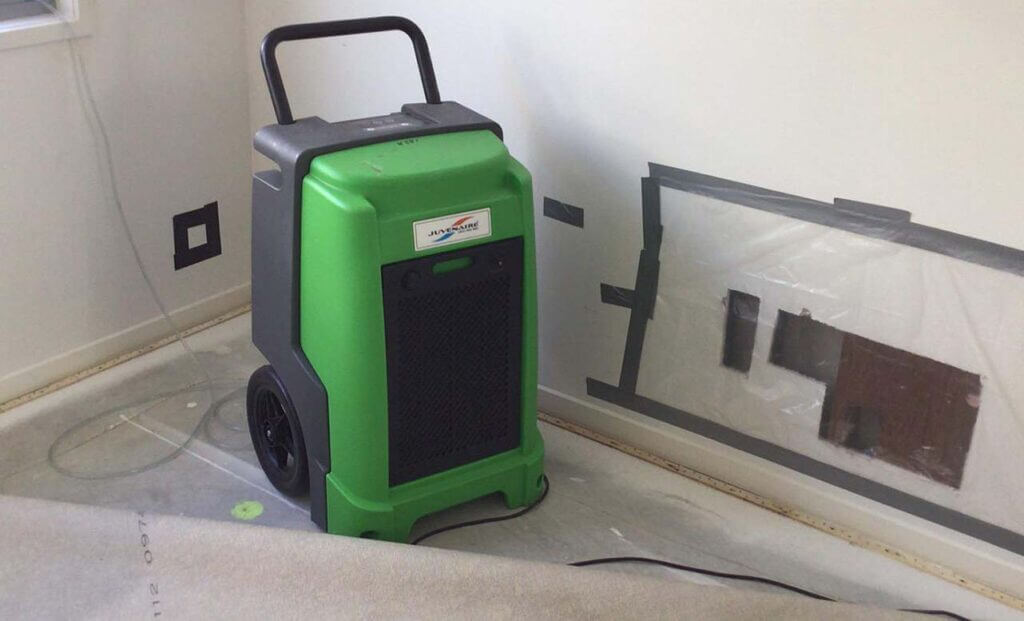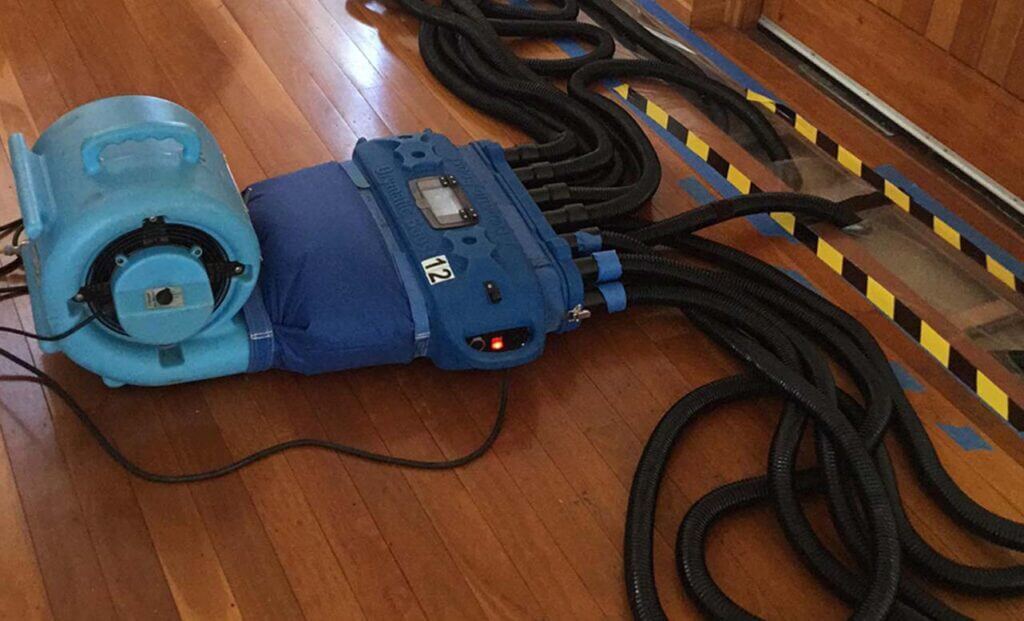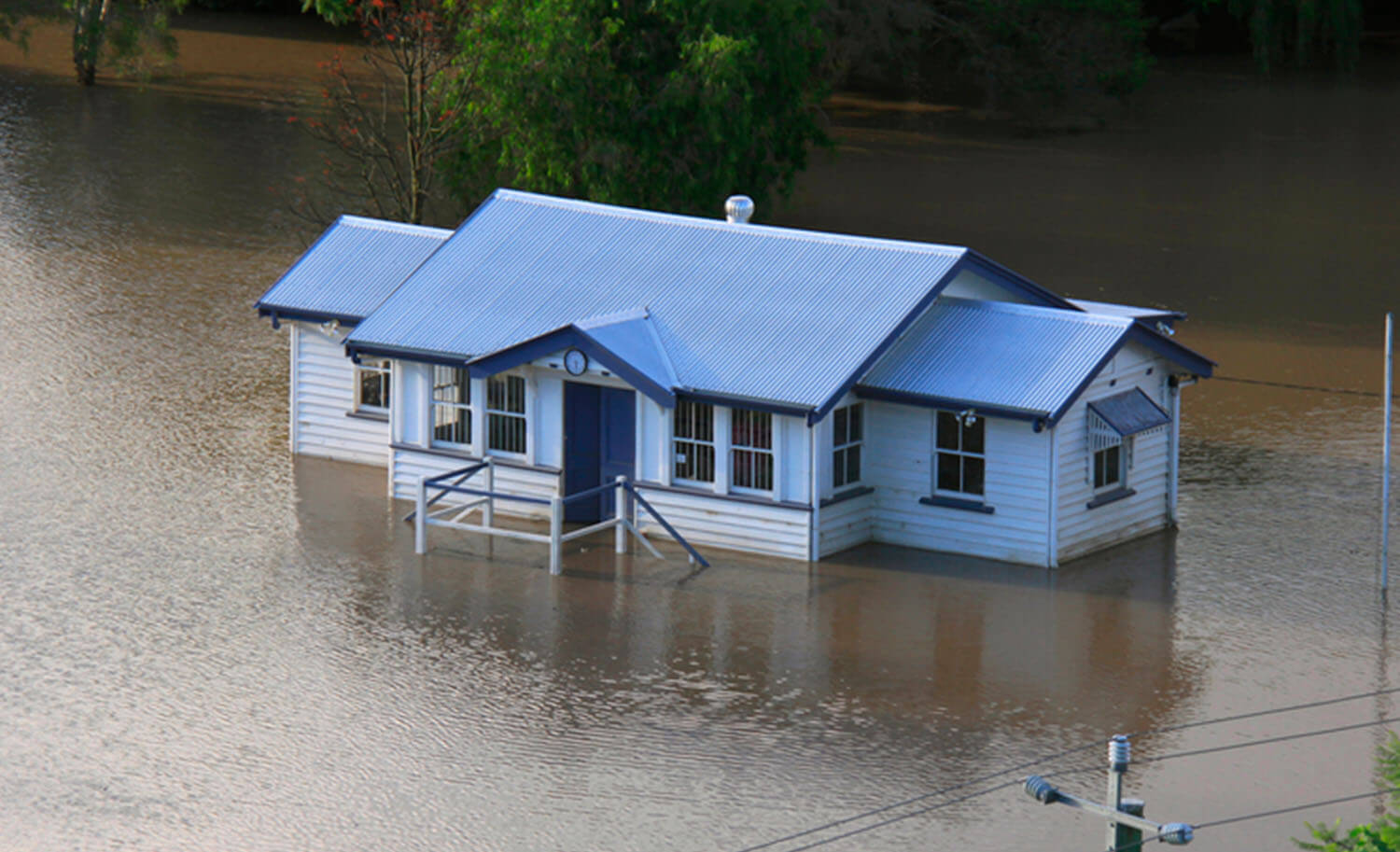One of the biggest concerns with flooded properties is the health and safety risk. Consequently caused by water contamination (grey or black water contamination) and mould growth. To prevent any health issues it is important to:
1. Sanitise the affected areas; and
2. Treat any mould growth.
These key areas are an important aspect of the clean up process. The following information on flooded properties is a guide only. We highly recommend these works are carried out by a professional restoration company . One with specialist training in water restoration and decontamination, as well as mould remediation.
Part A- Black Water contamination Cleaning Procedures
Category 3 water contamination is referred to as ‘Black Water’. It contains pathogenic agents such as sewage and other contaminants from various water sources that enter the property. Category 3 includes all forms of flooding from sea water, ground surface water and rising water from rivers or streams. Such water sources carry silt and organic matter into building structures and cause severe contamination and unsanitary conditions.

1. Initial decontamination
It is important to firstly decontaminate sewage and organic matter by spraying with a specialty cleaning solution. The aim of this treatment is to reduce the population of microorganisms as soon as possible. Accordingly the application of cleaning solution must follow correct procedure. This is to avoid health risks associated with exposure to the solution. As mentioned, this process should only be carried out by a professional.
2. Excess water and contaminant removal
Excess water and organic matter especially raw sewage and silt is then physically removed from the area.
3. Flush/Cleaning
Residual organic matter in cracks and crevices of salvageable materials is removed by flushing with a cleaning/disinfecting solution. It is vital to recover the flushing solution with an extraction unit immediately. Because this prevents further migration or absorption of contaminants into other porous materials. In some situations we use pressure washers to adequately flush contaminants out of cracks, crevices and from under structural components.
4. Detailed Inspection
Following the removal of organic matter and initial decontamination procedures, a detailed inspection is conducted. It takes into consideration the extent of water migration, types of affected materials and the degree of the damage. Incorporating the principles of psychrometry in addition to testing equipment is used to formulate a plan. This plan will be utilised to dry and restore (or replace) both the building materials and contents.
5. Building Materials
Evaluating building materials such as paneling, plaster and wood is done to assess physical damage and the degree of contamination. This helps to determine the need for removal and disposal. Removal of walls and skirting may be required to expose areas and pockets of contamination for cleaning and drying.
6. Floor Coverings and Subfloor
Affected timber laminate floating floor, vinyl floor, carpet or other floor coverings are removed and disposed of appropriately. In addition, sub-flooring is should be examined and if salvageable must be cleaned, disinfected, dried and sealed. The process to carry out sanitisation, drying and sealing should be carried out by a specialist restoration technician.
7. Detailed Cleaning & Secondary Biocide Application
After removing heavy soils and contaminants, the next step is to thoroughly clean materials before a second application of a biocide. Cleaning helps reduce the amount of organisms present so that subsequent biocide applications are not rendered ineffective by organic soils.
8. Structural Drying
Procedures should be implemented to increase the rate of drying. It is recommended that moisture and humidity be reduced as much as possible by introducing air movers and dehumidifiers. Doing so will drastically reduce drying times. It is recommended that a closed or mechanical dehumidification drying system be used for the restoration of affected properties.
An open drying system should be used when outside humidity is less than the humidity inside. Open drying systems involve leaving windows open along with the use of air movers to create evaporation. It is recommended that the building materials are dried to the building’s dry standard before any re-construction works. This is explicitly to prevent any future mould outbreaks.

Part B – Mould Remediation
The extent of the mould contamination is assessed by a mould remediation specialist. This is to ensure the correct decontamination procedures are implemented. The three conditions of mould contamination and the appropriate remediation steps are listed below:
Condition 3: (Visual Mould Growth)
Occurs when an indoor environment is contaminated with the presence of visual mould growth and associated mould spores.
Condition 2: (Settled Spores)
Condition 2 occurs in an indoor environment which is primarily contaminated with settled spores. Settled spores have been dispersed either directly or indirectly from a Condition 3 area as described above. Further more contain traces of actual mould growth.
Condition 1: (Normal Fungal Ecology)
Condition 1 occurs when an indoor environment contains minimal settled mould spores, fungal fragments or traces of mould growth. The identity, location and quantity should be reflective of a normal fungal ecology for similar indoor environment. This normal fungal ecology is determined via clearance tests that are conducted by restoration technicians.
Recommended Mould Remediation and Decontamination Process
1. Air Filtration Devices
An Air Filtration Device (fitted with HEPA filters) should be used in an area where remediation works are being conducted. This should occur prior to the cleaning and remediation of a Condition 3 mould contamination. It is important to recognise that exposure to materials contaminated with mould poses a significant health risk. The cleaning process must be carried out using correct PPE in conjunction with a risk assessment and work method statement.

2. Removal of Contaminated Structural Materials
Porous building materials with mould growth penetrating the surface (classified as Condition 3) need removal and appropriate disposal. Mould growth on framing can usually be removed using HEPA vacuum cleaners or wiping with a damp cloth. This is followed by sanding and wire brushing.
3. Detailed Structural Cleaning
To achieve Condition 1 status in the work area after demolition has been completed, it is important to thoroughly remove all visual mould, dust and debris from all surfaces, internal wall frame etc. Finally, it is highly recommended that periodic HEPA vacuuming and wet wiping of all surfaces in the remediation areas be performed to remove settled dust and spores.
One of the goals of mould remediation is to leave surfaces clean and dry. The source removal of contaminated porous materials is the preferred method for mould remediation or a Condition 3 environment. The use of ozone or ultraviolet (UV) light as a substitute for the aforementioned process, but is generally not recommended.
4. Drying
Once detailed cleaning is has been completed, drying the building structure (if required) should commence. This is achieved using mechanical drying methods such as the introduction of air movers and dehumidifiers.
It is important that the building materials are dried to the building’s dry standard before any re-construction works can be carried out to prevent any future mould growth. On the completion of the drying process, we carry out a micro misting process with specialist chemicals. Micro misting will reduce invisible mould spores.
5. Testing
Tests are conducted in order to receive clearance for E-coli, bacteria and mould. All to ensure the property has been returned to normal ecology.
Conclusion – Recommended Cleaning Procedures For Flooded Properties
- Initial decontamination – treat all surfaces with an antimicrobial for the reduction of microorganisms
- Removal all excess water and organic matter from the property
- Install air filtration devices (air scrubbers fitted with HEPA filters) and locate closely to the area being remediated
- After evaluation, porous building materials, i.e. plaster board walls, paneling, floating floors, vinyl, etc. remove as necessary and dispose
- HEPA vacuum all surfaces of the wall frame or any surface that is deemed to be a Condition 3 contamination
- Cleaning of affected surfaces is carried out via scrubbing, agitation, brushing, sanding the affected surfaces for the removal of contaminants
- Pressure cleaning of the bottom plate, crevices and cracks may also be required for the final removal of contaminants
- On completion of the cleaning, a further application of anti-fungal/anti-microbial solution is applied to reduce or suppress the growth of bacterial and mould
- Once the cleaning has been meticulously completed, drying of the buildings structure is carried out using mechanical drying methods, such as the use of air movers and dehumidifers, and heat drying
- It is recommended that the building materials are dried to the buildings dry standard before any re-construction works can be carried out to prevent any future mould growth.
- Micro misting of the property for the reduction of mould spores
- It is recommended to test for E-coli, bacteria and mould to ensure the property has been brought back to normal ecology.
References:
- IICRC (International Inspection Cleaning & Restoration Certification) S500 & S520 Standards and guidelines.
- Australian Mould Guideline AMG-2005-1
For more info on water damaged properties click here
